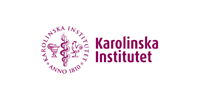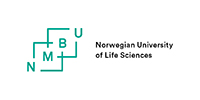Whenever a wound involves damage to the skin and underlying tissue, blood vessels will be ruptured, resulting in blood spurting, flowing or oozing out of the wound. Depending on the type of blood vessel involved, this can be venous, arterial or capillary bleeding.
In the case of an abrasive injury, the bleeding will be capillary. A minimum amount of blood will lie on the wound and the body will quickly stop the bleeding itself within a very short space of time.
In the case of arterial bleeding, blood sprays out of the wound in spurts. The high pressure in the artery causes the blood to spray and the beating heart is responsible for the spurts. The heart’s pumping action is reflected in the nature of the bleeding. Bleeding from an artery can result in significant blood loss within a short space of time. On the other hand, if the artery has been completely severed, there will only be a little bleeding due to reactions within the arterial tissue.
Since the blood pressure in veins drops to almost 0 mmHg due to the increase in volume when blood leaves the capillary network, the blood will flow weakly out of the damaged vein with no spurting. The only exception is venous bleeding in varicose veins. The accumulation of a large volume of blood in the highly dilated blood vessel causes the pressure in the vein to rise. When the vein is damaged, the pressure will cause the vein to burst and, as with arterial bleeding, blood will spurt out of the vein until normal venous pressure is achieved. Afterwards, the bleeding takes on the characteristics of venous bleeding, namely weak and oozing, without spurts. The severity of venous bleeding and the extent of blood loss depend on the diameter of the vessel involved and the extent of vascular damage. Venous bleeding is accompanied by a risk of air embolism. Suction caused by the heart and the flow of blood back to the heart can result in air instead of blood being sucked into the vein near the damaged area.
Although blood from a wound usually comes from various different types of blood vessels, it is easy to prioritise when administering first aid. For example, venous or arterial bleeding will always be accompanied by capillary bleeding. Arterial bleeding will be greater than venous bleeding, due to the higher pressure in arteries. It is of life-saving importance to maintain the volume of circulating blood by controlling bleeding in the case of a severe haemorrhagic wound.
Following damage to blood vessels, the body will undertake immediate measures of its own:
- The damaged blood vessel constricts, reducing the blood supply.
- A blood clot forms to seal the hole in the blood vessel. In the case of arterial or severe venous bleeding, clot formation may be hampered by the pressure of the blood flowing out, and the body may be unable to seal the hole.
- If a blood vessel is severed completely, the two inner layers of the vessel wall (tunica intima and tunica media) retract into the outer covering of the vessel (tunica externa). Together with the blood clot, they form a small ‘net-like’ structure covering the end of the ruptured vessel. This reaction does not occur with partially severed blood vessels and explains why bleeding from a partially damaged blood vessel is generally more severe than from one which has been severed completely.
- Blood loss changes the ratio between the volume of blood and the vascular volume. Since the volume of blood decreases, but the volume of the vascular network remains more or less the same, the blood pressure will gradually drop. The lower blood pressure reduces the blood flow from the wound, improving conditions to allow adequate blood clot formation.




























